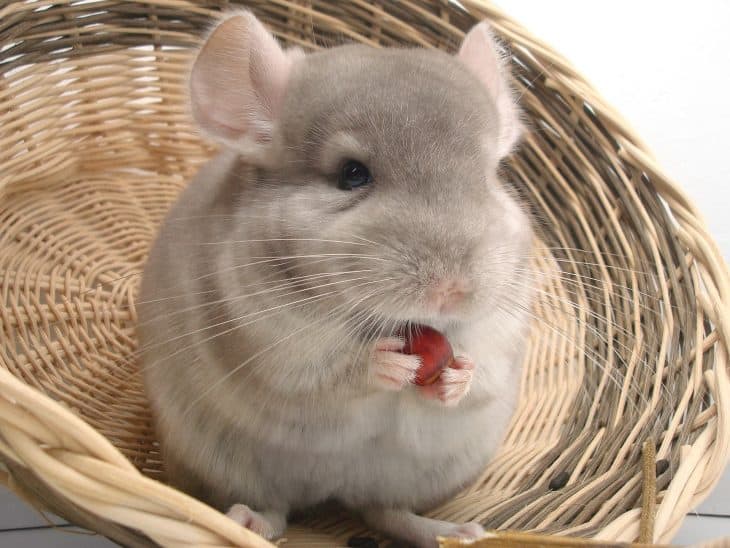
Known for their soft, dense fur and endearing charm, chinchillas have stolen the hearts of many as exotic pets. With their heightened senses and social tendencies, these rodents clearly stand out from the rest. Aside from their interesting anatomy and curious behavior, humans have also had a historic connection with chinchillas. However, they’ve also been victims of our greed. Find out more about these amazing animals with these charming chinchilla facts.
- The chinchilla’s ancestors first appeared 41 million years ago in South America.
- They have four clawed toes on each foot.
- Female chinchillas have an estrus cycle of 38 days.
- They reach sexual maturity at around 8 months of age.
- Their hind legs are more than twice as long as their front legs.
- Chinchillas are rodents similar to squirrels and rabbits.
- Chinchillas have large, black eyes and round ears.
- Their thick fur is grayish in color.
- The pupils of their eyes have vertical slits.
- Chinchillas are most closely related to viscachas, which are rodents that look similar to rabbits.
- They have bushy tails, which can be short or long depending on the species.
- Chinchillas live in the dry and rocky environments of the Andes mountains, primarily in northern Chile.
- They also used to thrive in parts of northwestern Argentina, Bolivia, and southern Peru, but their territories became restricted to Chile because of habitat loss and poaching.
- Chinchilla fur has very little amounts of dander. They’re less likely to cause allergic reactions than other furry animals.
- Like all rodents, their teeth grow continuously throughout their lives and must be worn down regularly through gnawing on hard items.
- Chinchillas are unable to sweat.
- When eating, chinchillas typically hold their food with their front paws and nibble on it while they sit.
- A group of chinchillas is called a herd.
- Baby chinchillas are referred to as kits.
- The chinchilla takes its name after the Chincha people of the Andes mountains who wore their fur as coats.
There are two species of chinchilla.
The genus Chinchilla has two living species: the short-tailed chinchilla (Chinchilla chinchilla, formerly Chinchilla brevicaudata) and the long-tailed or Chilean chinchilla (Chinchilla lanigera). Among the two, the long-tailed chinchillas are more common in the pet trade.
Aside from the length of their tails, the two species also have differences in other parts of their bodies. For one, short-tailed chinchillas have heavier and stouter bodies. Compared to the long-tailed variant, they have thicker shoulders and a thicker neck. This could be due to the fact that the short-tailed chinchilla lives higher up in the Andes mountains and needs thicker fur than the long-tailed chinchilla. Meanwhile, long-tailed chinchillas have bigger ears compared to short-tailed chinchillas.
Chinchillas are primarily herbivores.
A chinchilla’s diet mostly consists of plants. They eat whatever kind of vegetation their habitat provides, such as grasses, leaves, fruits, and flowers. Chinchillas may also occasionally eat insects they come across in their natural habitat. They live in very dry areas in the wild, and they mainly consume water from morning dew and cacti.
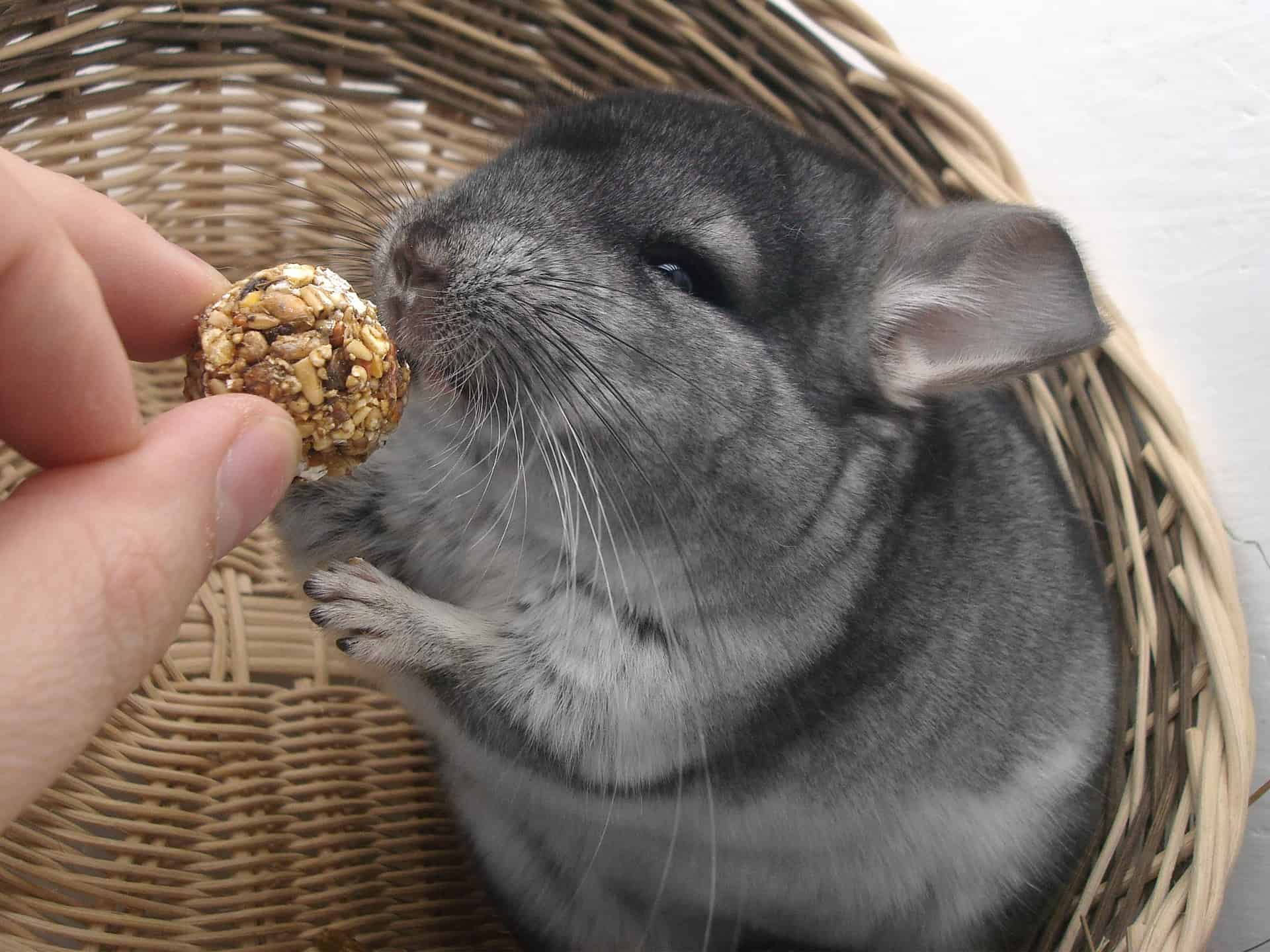
Chinchillas have relatively long lives.
The lifespan of chinchillas lasts approximately 8-10 years in the wild or in habitats they aren’t used to. If owners keep them in ideal conditions, chinchillas can live for up to 15 to 20 years. This is relatively longer than most rodents, which typically do not reach more than 8 years of age. Definitely one of the essential chinchilla facts to take note of.
Chinchillas live in high altitudes.
These adorable, furry rodents live high up in the Andes mountains in South America, at elevations of about 9,800 to 16,400 ft (3,000 to 4,500 m) above sea level. The average temperature in those altitudes drops to lows of 23 °F (-5 °C). As such, their thick fur provides them with insulation, protecting them from the temperature in their natural habitats.
Chinchillas have dense fur — the densest among all land mammals.
Despite having the densest fur of all land mammals, chinchilla fur is extremely soft to the touch. Their counterpart in the sea is the sea otter, which has a much denser fur. A chinchilla can have around 50 to 75 individual hairs growing out of a single hair follicle, while humans only have 2 to 3 hairs in one follicle.
Their fur provides them with excellent camouflage in the wild.
Chinchilla fur does not only protect them from the harsh temperatures in their mountain habitat — it also protects them from predators such as owls, foxes, and snakes. Mostly grey with black tips, their fur helps them blend in with their rocky habitats. However, domestic chinchillas come in a variety of colors with 30 different kinds.
It’s rare to find ticks or fleas on chinchillas.
Skin parasites such as ticks and fleas need to have extreme luck to infest chinchillas, because their incredibly dense fur protects them from these parasites. However, fleas and ticks can still make their way in spots where the fur is thinner, such as the belly, face, ears, and feet.
They take dust baths to clean themselves.
The dense fur of chinchillas mean that it will take a long time for water to completely dry out from their fur. Therefore, it’s highly discouraged to give them water baths. If a chinchilla gets wet, it can cause fungi to grow in the fur or even lead to hypothermia.Because they can’t take water baths, chinchillas clean themselves through dust baths. They roll around in fine dust to remove grease and any loose material in their fur.
Chinchilla dust bathing has three phases. In the first phase, the paw phase, they bring the dust to their bodies. Next, in the cheek phase, they rub the dust on their faces. In the final phase, the spin phase, they roll their bodies in the dust. The longer a chinchilla has gone without a dust bath, the more it will spin in the dust.
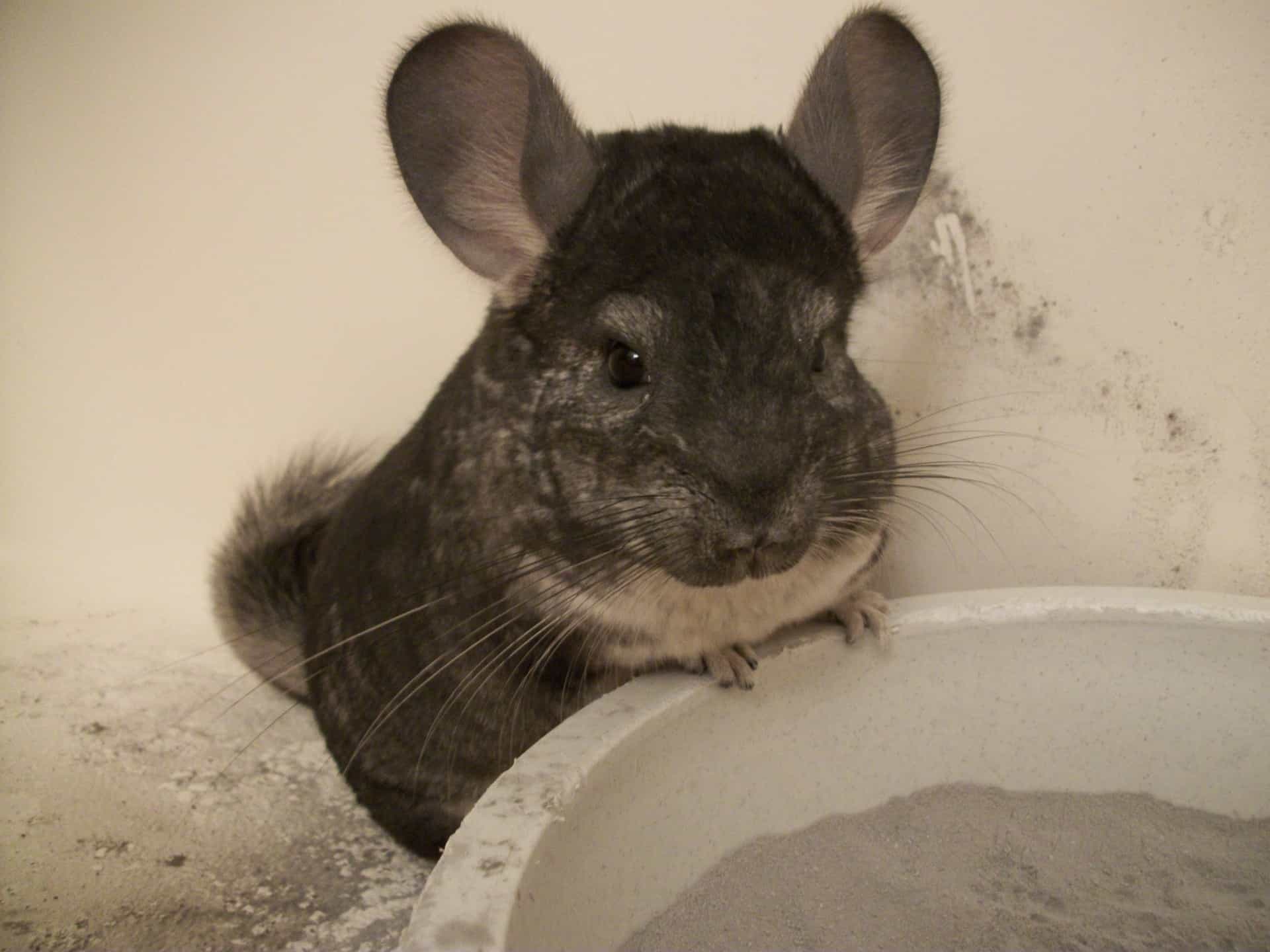
They shed off patches of fur to escape predators.
One of the most interesting chinchilla facts is that chinchillas can shed large patches of fur to break free from the grasp of their predators. Called “fur slipping,” chinchillas can also display this behavior when they’re stressed, held too tightly, or get stuck.
When handling a pet chinchilla, experts recommend that owners don’t restrain them too tightly because they can easily get stressed with a tendency for fur slipping. Now there’s one for important chinchilla facts.
Due to their dense fur, chinchillas are susceptible to heat stroke.
This is one of the most essential chinchilla facts if you want one as a pet. Chinchillas not only prefer to live in chilly weather – they won’t survive in extreme heat. Although the thick fur of chinchillas offers great protection from their cold natural habitats, the fur also makes them susceptible to heat stroke.
Their dense fur traps their body heat, which can lead to overheating when placed in warmer environments. Typically, chinchillas thrive in temperatures below 75 °F (25 °C) – any higher and it may be lethal for them.
Female chinchillas have babies twice a year.
In the Northern Hemisphere, chinchillas tend to breed between the months of November to May. Meanwhile, they typically breed from May to November in the Southern Hemisphere. Female chinchillas are mostly monogamous, though some scientists contest that both sexes are polygamous and mate with multiple partners.
When a female chinchilla becomes pregnant, she carries the kits in her womb for around 111 days. After which, she will give birth to a litter of around 1 to 6 kits, with 2 being the most common. Generally speaking, a female chinchilla can give birth twice a year.
Baby chinchillas are born with a full coat of fur.
Unlike other rodents which are born naked and helpless, chinchillas have a full coat of fur and functioning eyes at birth. Since they spend a much longer time in gestation, their teeth also develop inside their mothers’ wombs.
At birth, they can also already digest solid food, although they mostly rely on their mothers’ milk. Like most mammalian babies, however, these kits seek warmth, tending to crawl under their mother’s body for protection. Mother chinchillas then clean them regularly, ensuring that they are safe and sheltered.
Females may adopt abandoned baby chinchillas.
Compared to other animal parents, chinchillas can be especially caring, even adopting abandoned or orphaned baby chinchillas. Unlike other rodent species, the male chinchillas also participate in caring for the young. Truly one of the chinchilla facts that will melt your heart!
Chinchillas can be trained to stay active during the day.
Chinchillas are primarily crepuscular, which means they’re only active during dusk and dawn. However, they can also be nocturnal, staying active during the nighttime. Chinchillas adopt this natural body clock because this period makes it easier for them to forage under the cover of darkness, avoiding daytime predators.
However, domesticated chinchillas can be trained to become more diurnal or active during the day to match their waking hours with their human caretakers.
Chinchillas are highly social.
Like rabbits and guinea pigs, chinchillas are social animals that find safety in numbers. In the wild, they live in herds of up to 100 individuals, although they typically live in smaller herds. Aside from simply coexisting, they like playing with other chinchillas and enjoy foraging together. Typically, some chinchillas would stand guard and watch out for predators as the others forage.
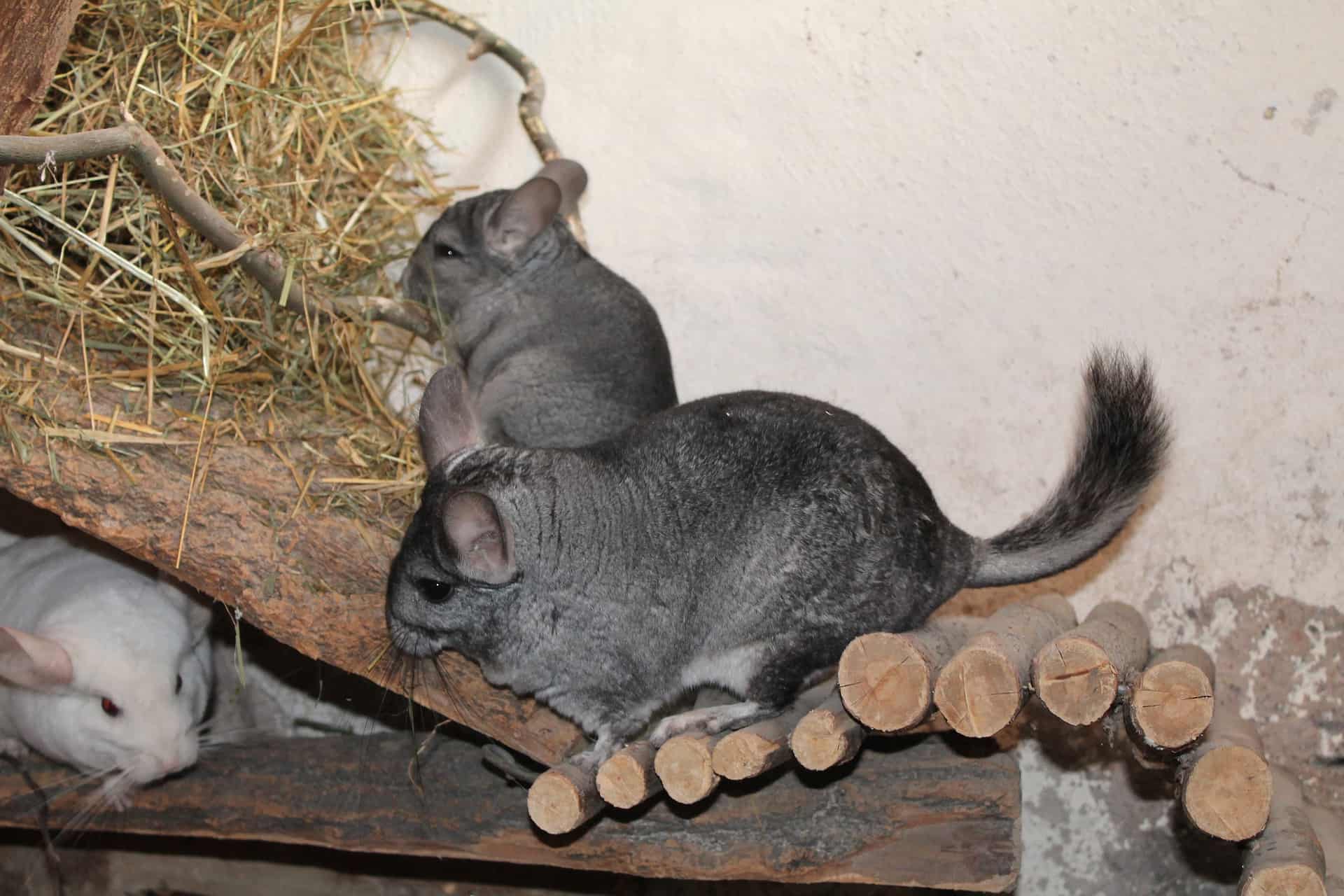
They have a wide range of calls.
As with most social mammals, chinchillas communicate primarily through sound. They make a wide range of chinchilla sounds such as chirping and soft cooing. They can use their variety of calls to indicate many things, such as in mating, fighting, and alerting others about potential predators.
Female chinchillas are more dominant than males.
Between male and female chinchillas, females are larger, heavier, and more dominant than the males. When the females are in heat, they can be quite aggressive towards other females or even males. An agitated chinchilla will communicate its threats through chattering their teeth, growling, or spraying urine.
Chinchillas have excellent hearing.
Due to their large ears, chinchillas survive through their sensitive hearing that lets them detect predators easily. However, this also makes them easily overwhelmed and startled. Their heightened hearing can make any unfamiliar sound or loud noise frightening for them, so it’s better to keep them in quiet homes.
Similar to humans, they tend to lose their sense of hearing as they grow older.
This is one of the chinchilla facts you probably have never heard about. Like humans, chinchillas’ hearing also deteriorate with age. Also known as presbycusis, chinchillas experience a more pronounced decline in hearing compared to other rodents. As their hearing declines, they lose their sensitivity to high-frequency sounds more than low-frequency ones.
They are valuable in scientific research.
Since their hearing sensitivity resembles that of humans, scientists see chinchillas as ideal animal candidates for hearing research. Structurally, their larger ears also allow scientists easier access to their inner ears. Compared to other species, chinchillas are also easier to handle and live longer lives. Generally speaking, the long-tailed chinchilla often features as specimen in biomedical research.
They have cones as genitals.
Unlike in rats wherein the males can easily be identified through their scrotum and external genitalia, both male and female chinchillas have cone-like external genitals. This sometimes results in confusion, but you can tell the two sexes apart by looking at the distance between their anus and the genital cones. Males have a gap between the cone and the anus, while there is no such visible gap in the females. The males may also have visible testicles if they’re old enough.
They use whiskers to navigate during the night.
Similar to cats and many other mammals, chinchillas have sensitive whiskers that they use to navigate in the dark. Also called vibrissae, these long hairs measure about a third of the chinchilla’s body length. With these whiskers, they can easily locate crevices to enter and hide in.
Chinchillas can jump as high as six feet.
To avoid predators, chinchillas often hide in rock crevices or burrows. They can spray urine as a defense mechanism. These agile rodents also often outrun their predators because they’re able to run and leap at great speeds. With their powerful hind legs, chinchillas can jump as high as six feet (1.8 m) from a standing start. How’s that for amazing chinchilla facts?
They can get easily distressed.
Due to their heightened senses, chinchillas can easily get overwhelmed and distressed. Their stress manifests in many physical symptoms, such as fur chewing or fur barbering, or excessive grooming behavior that leaves them with uneven patches. An agitated chinchilla would either chew their own fur or the fur of their cage mates, with the behavior worsening over time.
Some chinchillas experience convulsions.
Though it does not always happen, chinchillas can experience convulsions or sudden and intense involuntary movements. These convulsions may indicate brain damage, nutrient deficiency, or hemorrhaging. This can can also happen after mating, which often indicates circulatory problems. In extreme cases, they can also get convulsions due to stress.
Chinchillas are often kept as exotic pets.
Their soft and dense fur and docile behaviors make them attractive in the exotic pet trade. Most domestic chinchillas descended from long-tailed chinchillas. However, it’s important to note that a pet chinchilla requires a substantial amount of care. For one, they need a large and temperature-controlled chinchilla enclosure, as well as dental care and frequent dust baths.
As social animals, they can also get lonely and require a lot of interaction. If they aren’t trained to be awake during the day, they can make various noises throughout the night, which could be a potential hassle.
There are three subtypes of domestic chinchillas.
Domestic chinchillas come from the long-tailed species, with three different subtypes: costina, la plata, and raton. The costina chinchilla has a spine with a pronounced arch, a prominent pointed nose, and distinctively long hind legs. Meanwhile, la plata chinchillas look like smaller short-tailed chinchillas with their short and stocky build. Finally, the raton chinchilla is the smallest subtype, with a distinctly pointier nose than the costina subtype.
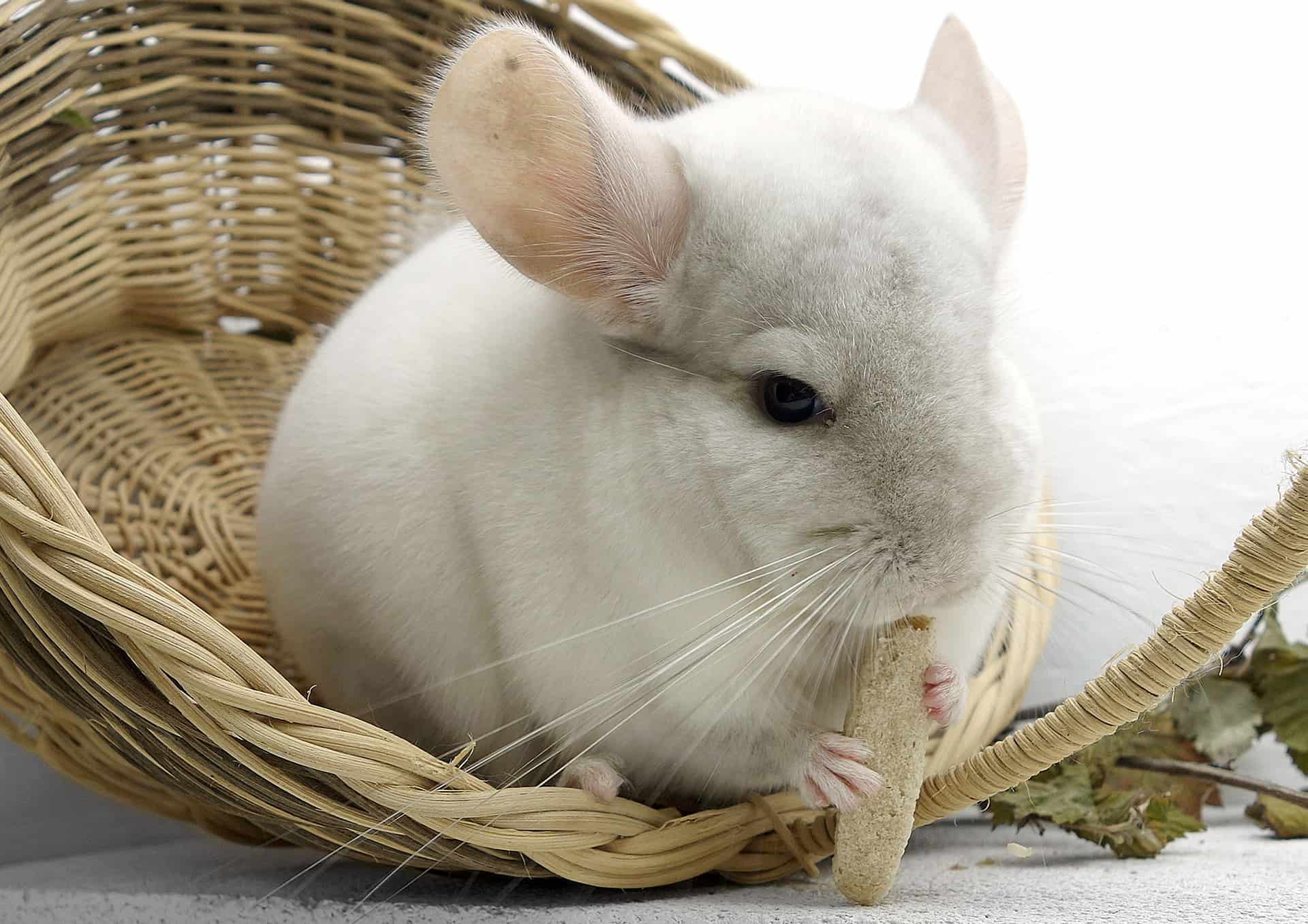
Nearly every pet chinchilla in the United States came from 11 individual chinchillas.
In 1923, American mining engineer Mathias F. Chapman brought chinchillas to the United States. With permission from the Chilean government, almost all chinchillas present in the United States came directly from the 11 chinchillas brought by Chapman. Nearing extinction at the time, it took Chapman and 23 men around 3 years just to catch 11 chinchillas.
While the early days of chinchilla proved to be unsuccessful, it has since improved and let the species flourish for a time. The first of these chinchillas were mostly kept captive for use in fur farms, eventually being sold as pets or used in research.
People hunt chinchillas for their velvety fur.
Due to their soft and velvety fur, people used to hunt chinchillas to make various pieces of clothing. Highly valuable for luxury items, a single chinchilla fur coat can cost up to $100,000. As such, their fur became popular in England, France, Germany, and the United States.
Unfortunately, this industry is highly unsustainable for chinchillas, since it can take up to 400 pelts just to make a single coat. Even so, some still breed chinchillas in captivity for their soft fur.
Both species of chinchilla are endangered.
Since commercial hunting began in 1828, humans have driven chinchillas near extinction for their highly-coveted fur. The Incas also hunted chinchillas in the past for their meat, but the fur industry had a far more significant impact on their wild populations.
In particular, short-tailed chinchillas suffered a steep decline in their populations, plummeting from “Least Concern” in 1996 to “Critically Endangered” in 2008. In a single decade, chinchillas have lost at least 80% of their population because of human hunting.
Currently, the government prohibits all forms of trapping and hunting chinchillas, but it’s difficult to enforce such regulations because of the high value of their fur. Furthermore, human activities such as mining and agriculture caused chinchilla habitats to become more restricted, further affecting their populations. In 2016, their populations experienced a small recovery, going from “critically endangered” to “endangered”.
Was this page helpful?
Our commitment to delivering trustworthy and engaging content is at the heart of what we do. Each fact on our site is contributed by real users like you, bringing a wealth of diverse insights and information. To ensure the highest standards of accuracy and reliability, our dedicated editors meticulously review each submission. This process guarantees that the facts we share are not only fascinating but also credible. Trust in our commitment to quality and authenticity as you explore and learn with us.
